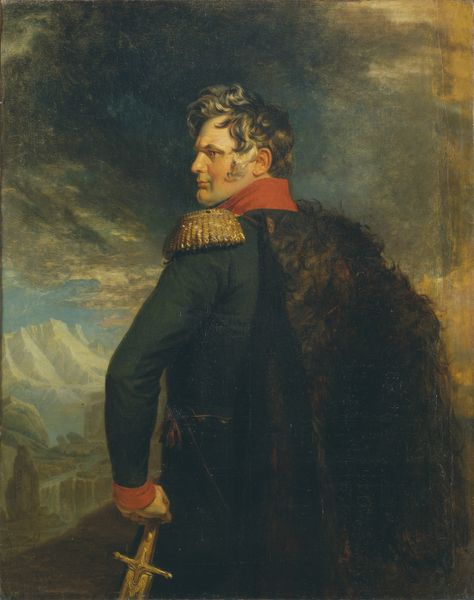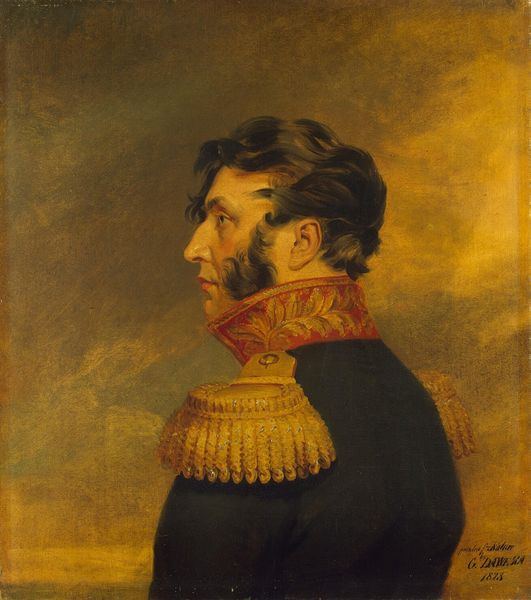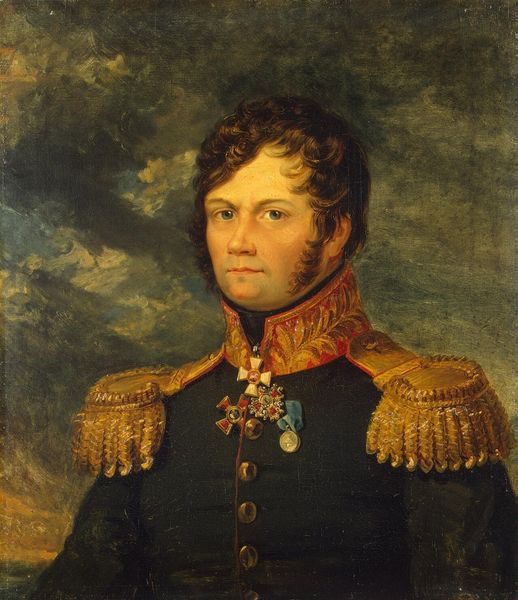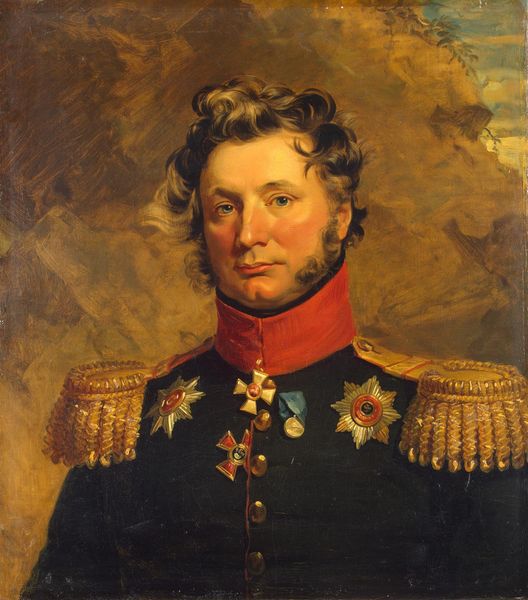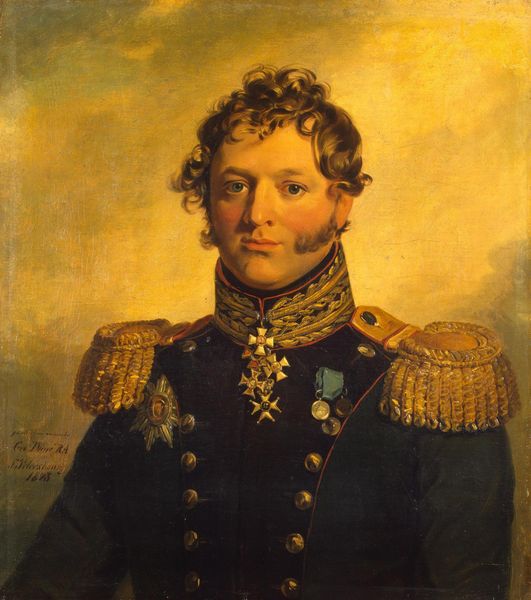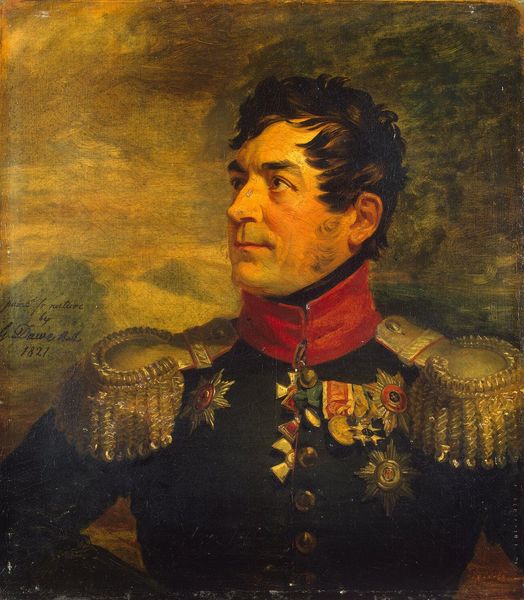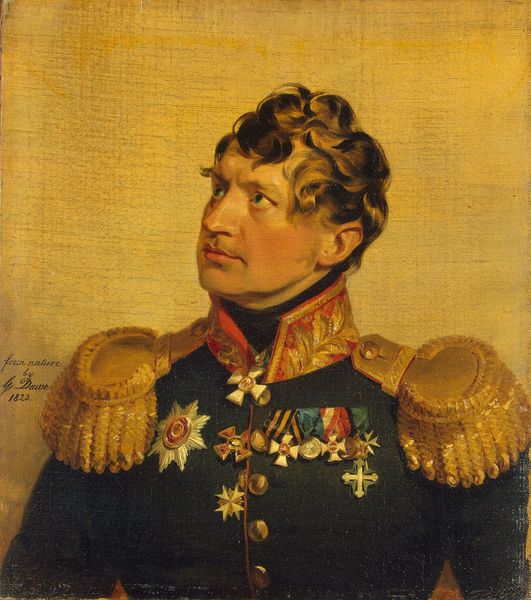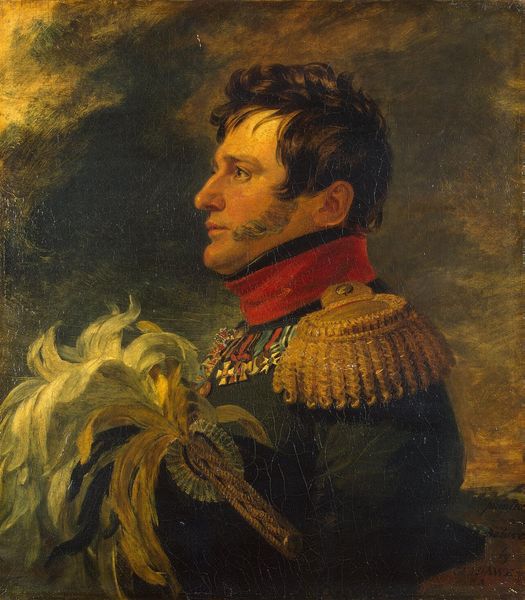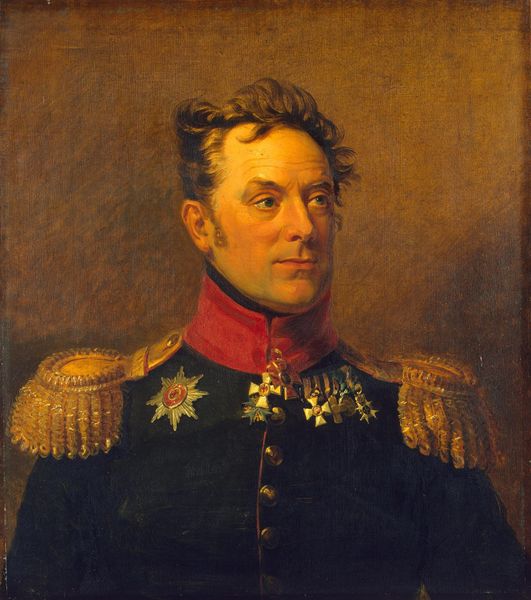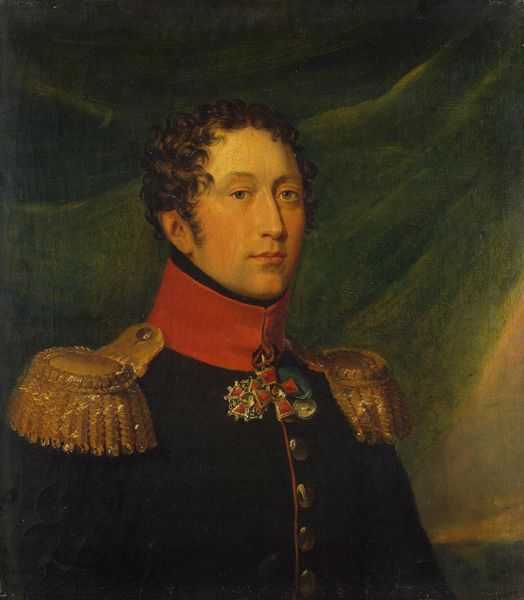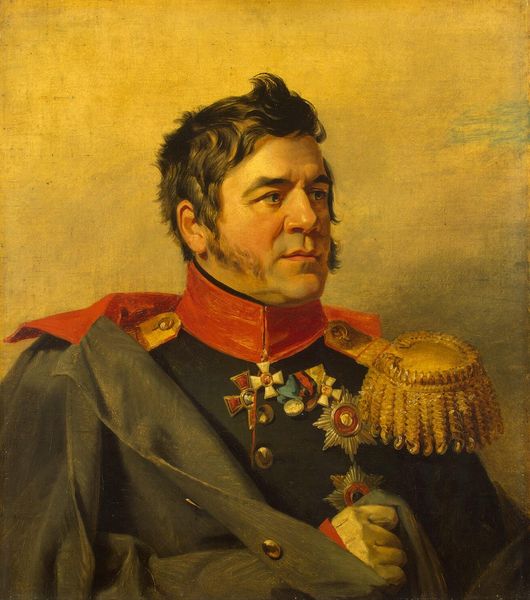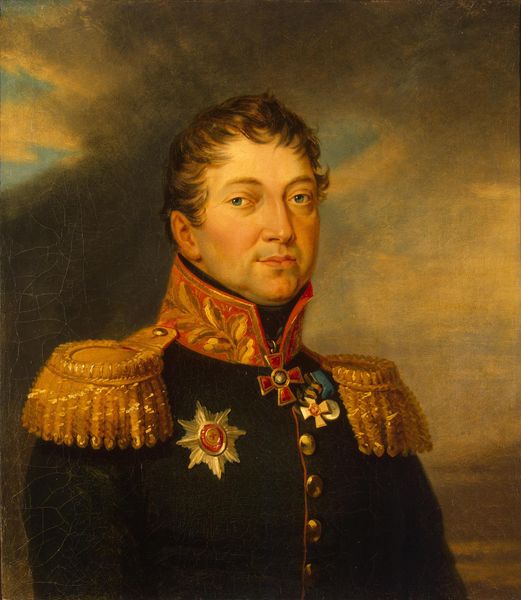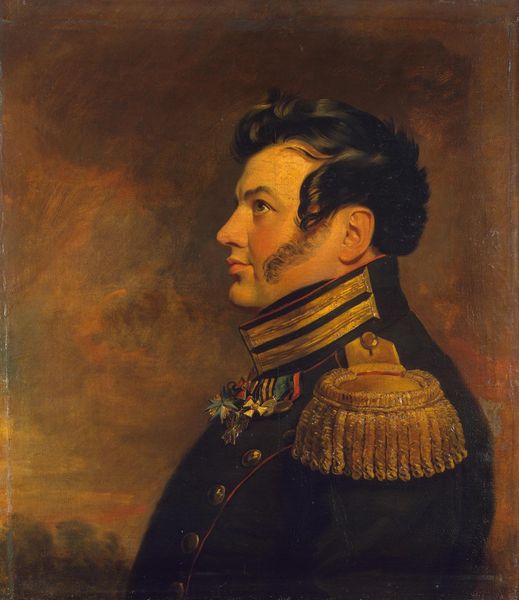
painting, oil-paint
#
portrait
#
painting
#
oil-paint
#
landscape
#
romanticism
#
history-painting
#
realism
Copyright: Public domain
Editor: Here we have George Dawe’s oil painting "Portrait Des General Alexei Jermolow," created in 1824. The formidable figure of Jermolow immediately commands attention; what stylistic choices do you notice, particularly relating to Dawe's rendering of form and space? Curator: Focus first on Dawe's application of impasto. The way he builds up the paint in layers, particularly in Jermolov's hair and the details of his military attire. What does the use of impasto convey to you in these specific areas? Editor: It really highlights texture and light, making his hair look almost touchable. The gilded epaulettes really pop too. Curator: Precisely. Now, consider the portrait’s composition. How does Dawe use line and form to direct the viewer's gaze and suggest character? The stark profile, the way the planes of his face are rendered – observe how that all contributes to a sense of power. Editor: His profile definitely creates a feeling of authority, even severity. The gaze is fixed, resolute. Also, the backdrop is subtle and subdued, isn't it? Curator: Precisely! It creates a powerful visual dynamic that emphasizes Jermolow's individual presence. Do you think this tension between figure and background has any semantic value, in other words, meaning-making potential, relative to his stature as a general? Editor: That’s fascinating. So it's the stark simplicity against the decorated uniform. Thank you! Curator: Yes. A productive visual reading. Considering its formal properties opens a window to thinking more critically about visual experience.
Comments
No comments
Be the first to comment and join the conversation on the ultimate creative platform.
